Complex biological systems cannot be understood without taking them apart and analyzing the function of their individual components. But then, how do we put them back together to understand their function as a working system?
Mathematical simulations of biological processes are one of the most powerful approaches known to facilitate this endeavor. Therefore, we use simulations extensively to probe our thinking about the processes of interest to us and to suggest new experiments.
In addition, I use simulations as part of teaching both our graduate and medical students at UT Southwestern. Some of the areas in which simulations are very useful and arguably essential include: Diffusion, membrane potential and action potentials, cardiovascular physiology, and renal ion transport.
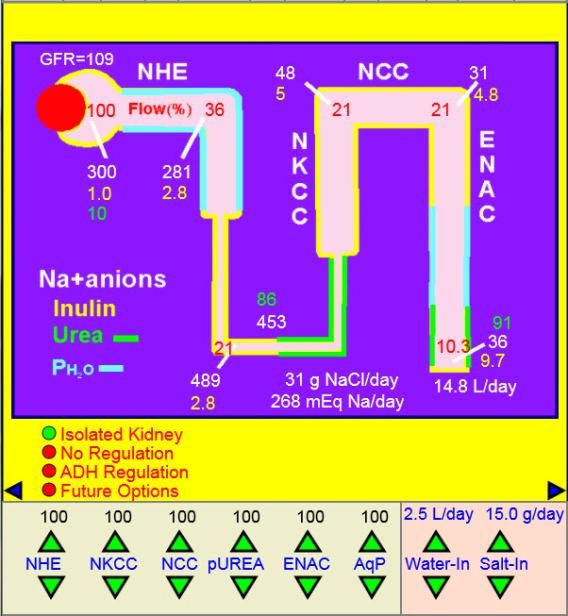 Coupled CV-Kidney Function
Coupled CV-Kidney Function 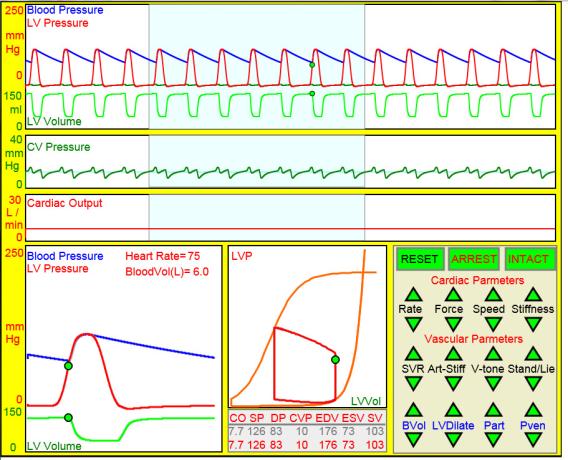 Simplified CV Function
Simplified CV Function 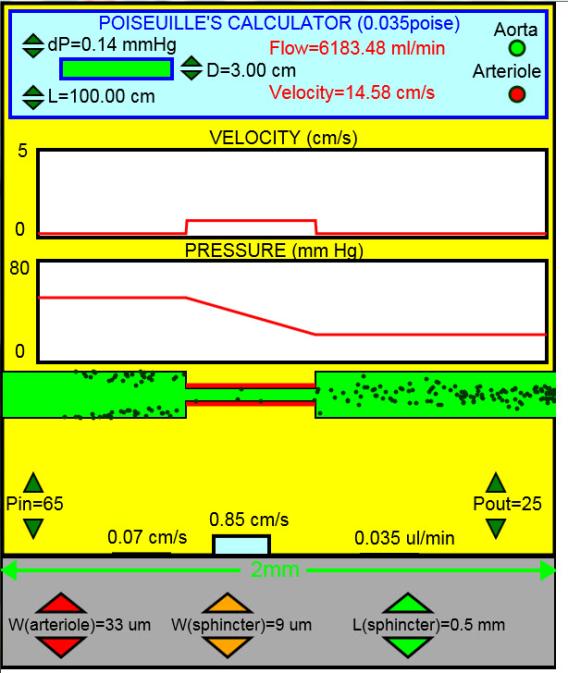 Poiseulle’s Principles
Poiseulle’s Principles 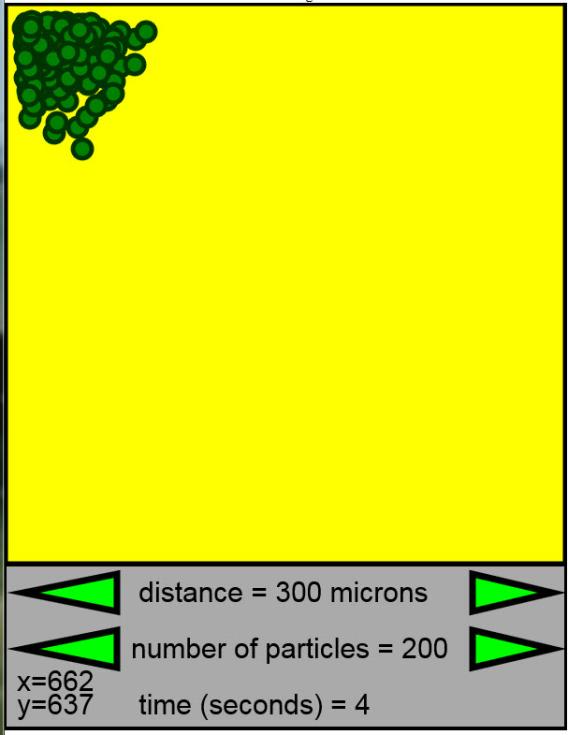 Diffusion
Diffusion 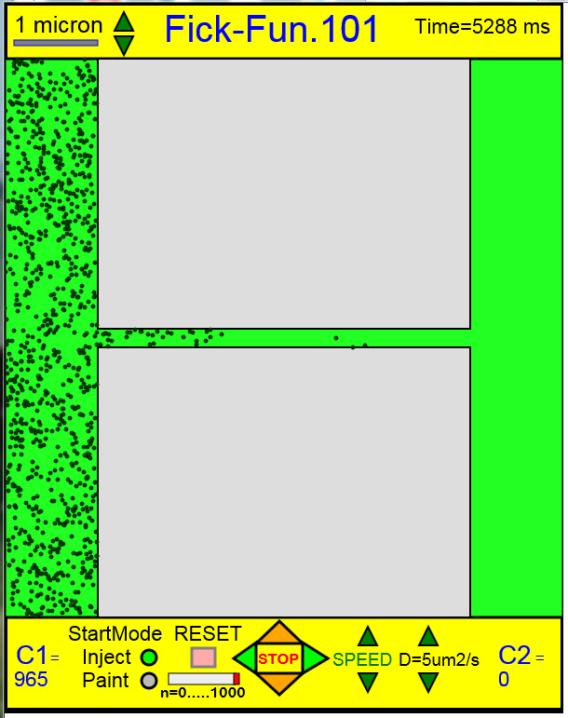 Restricted Diffusion
Restricted Diffusion 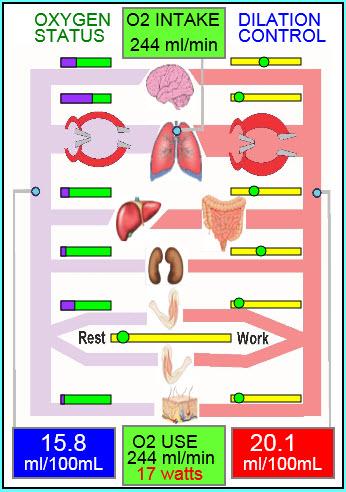 CV Function
CV Function 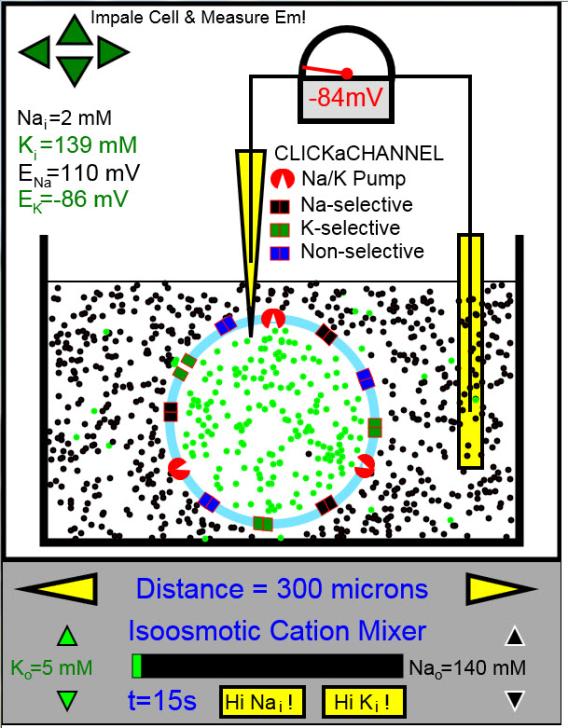 Membrane Potential
Membrane Potential